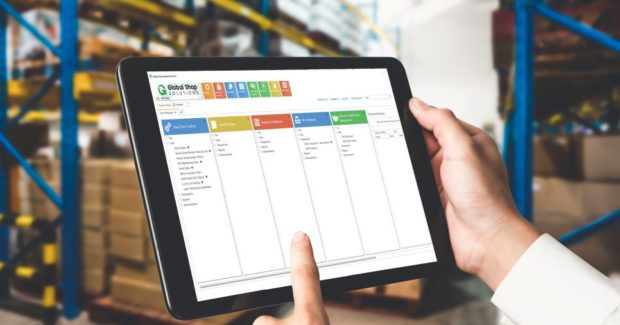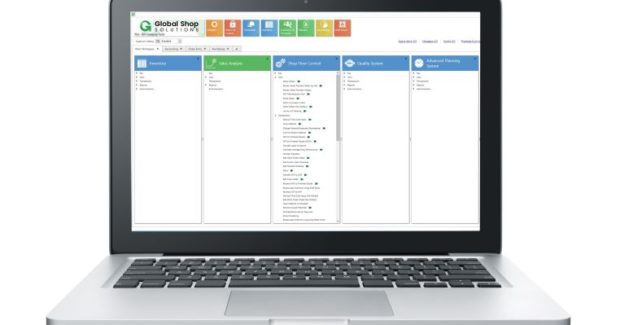Ten Integrations Every Manufacturer Needs With Their ERP
The ability for an ERP system to integrate with third-party Internet of Things technologies has become one of its most important features — and a powerful competitive advantage.
Posted: October 16, 2021
DIGITAL BY DESIGN
By Daniel Carranco
As manufacturing markets grow more competitive, the need to operate lean and eliminate inefficiencies has become more important than ever. Today, the best enterprise resource planning (ERP) systems incorporate all the new Internet of Things (IoT) technologies to enable your business to cut costs, work more efficiently, and simplify your entire manufacturing process in ways that were previously only dreams.
Below are the 10 integrations every manufacturer needs with their ERP. If you don’t acquire them soon, expect to be left behind — by your customers and your industry.
1. Nesting interface
Operating lean requires reducing setup time and labor as well as material waste. A nesting interface enables your ERP system to share information with the nesting software, including work orders, inventory information, workcenter details and other data. The nesting software uses this data to optimize material usage and sends cut list details, material drops, scrap, and estimates for routing and work orders back to the ERP system.
2. RFID
Radio frequency identification (RFID) lets you consolidate all access procedures into your ERP system to eliminate multiple badges, barcoded employee lists and human error. In the process, RFID provides faster and more efficient logins, more accurate data, lower technology costs, and stronger security of your building and your data. It also facilitates more accurate payroll processing, tracking of job costs, improved scheduling, locating misplaced tools/equipment, shrinks waste and effectively traces inventory.
3. EDI
In the manufacturing world, small process improvements performed hundreds of times a day can add up to big savings. Using electronic data interchange (EDI) to seamlessly integrate with your customers’ business systems speeds up the order entry process by allowing them to send order data electronically. No phone calls. No faxes. No manual data entry. Just fast, accurate electronic data transmission that eliminates the need for a second entry on the other side of every transaction and the need for time-consuming reconciliations.
4. eCommerce/web
When it comes to saving time and simplifying processes, eCommerce is like EDI on steroids. Imagine if customers could place an order on your website, and your ERP system would automatically launch the sales and work order processes to get the job rolling. Then it would also automatically send an invoice or process payment with a credit card. How much time and effort would that remove from your order entry process?
5. CAD interface
A CAD Interface solution can eliminate wasteful manual entry by seamlessly importing the BOM into your ERP system. Your engineers can then use the imported BOM to ensure sufficient materials are on hand to complete the job on time and on budget. With a CAD interface you can reduce engineering time and costs; eliminate manual data entry to update BOMs, and the human error that goes along with it; ensure everyone on the shop floor has the latest document rev; and create jobs faster.
6. Tool cribs and vending machines
To improve the accuracy of tooling costs, more manufacturers are employing tool vending machines. A worker scans their badge and job number into the machine and presses a button for the tool they need. The vending machine dispenses the tool and automatically applies the cost of the tool to the job, thereby increasing accuracy for the overall job costing process. The key with this integration is seamlessly transporting the costing data to your ERP system.
7. Employee efficiency
You can’t afford to have employees standing around wondering what to do next. Integrating Internet-capable TV screens and displays with your ERP system can significantly reduce employee red time. These screens, strategically placed around the shop floor, can display a variety of real-time data pulled from your ERP system. In addition to keeping employees on the job, this integration eliminates the need for reams of paperwork orders and shop floor schedules. It also prevents confusion on the shop floor because employees can always see what needs to be worked on and when — without having to leave their machines or workcenters.
8. Payroll
Accounting and payroll are complex, time-consuming processes. Managing all the data in one system makes the entire process quicker and easier while reducing administrative costs. Integrating your payroll system into your general ledger and shop floor data allows you to easily distribute payroll by department, complete end-of-month closing in less time, simplify tax reporting, and manage your employees better than ever.
9. Taxes
Manufacturers can now link sales tax data directly from their ERP software to their state sales and property tax software programs. They can also simplify other tax-related tasks, such as R&D tax credit tracking. For example, one our customers uses this integration to set up tasks on their work orders. This allows the project manager to instantly review the percentage of work on a job that can be attributed to R&D for tax credit purposes.
10. Business services
Tracking employee expenses — meals, gas, tools, etc. — on installations, repairs and other service calls has long been a thorn in the side of financial personnel. It can easily interfere with your ability to track job costs in real time. Now you can enjoy real-time cost, compliance, and visibility by integrating expense-reporting software with your ERP system. Using a smartphone app, your field service teams can tie expenses directly into a work order in your ERP software the minute they happen. Job costing has never been so simple or timely.
As IoT transforms the manufacturing industry at breakneck speed, success increasingly depends on your ability to connect with real-time data from anywhere at any time. If you’re not taking advantage of the ERP integrations outlined above, talk to your ERP provider today. You’ll be amazed at how a few simple integrations can exponentially increase the power, functionality, and return on investment of your ERP software.

















